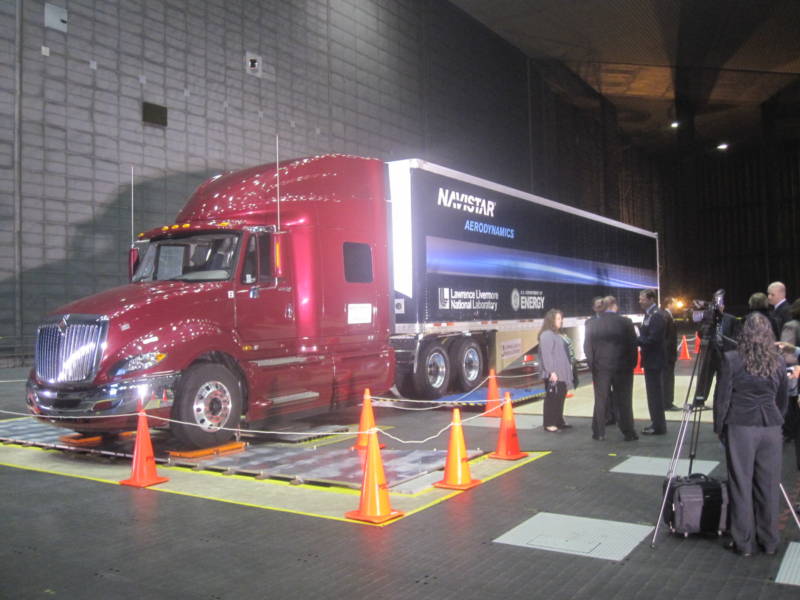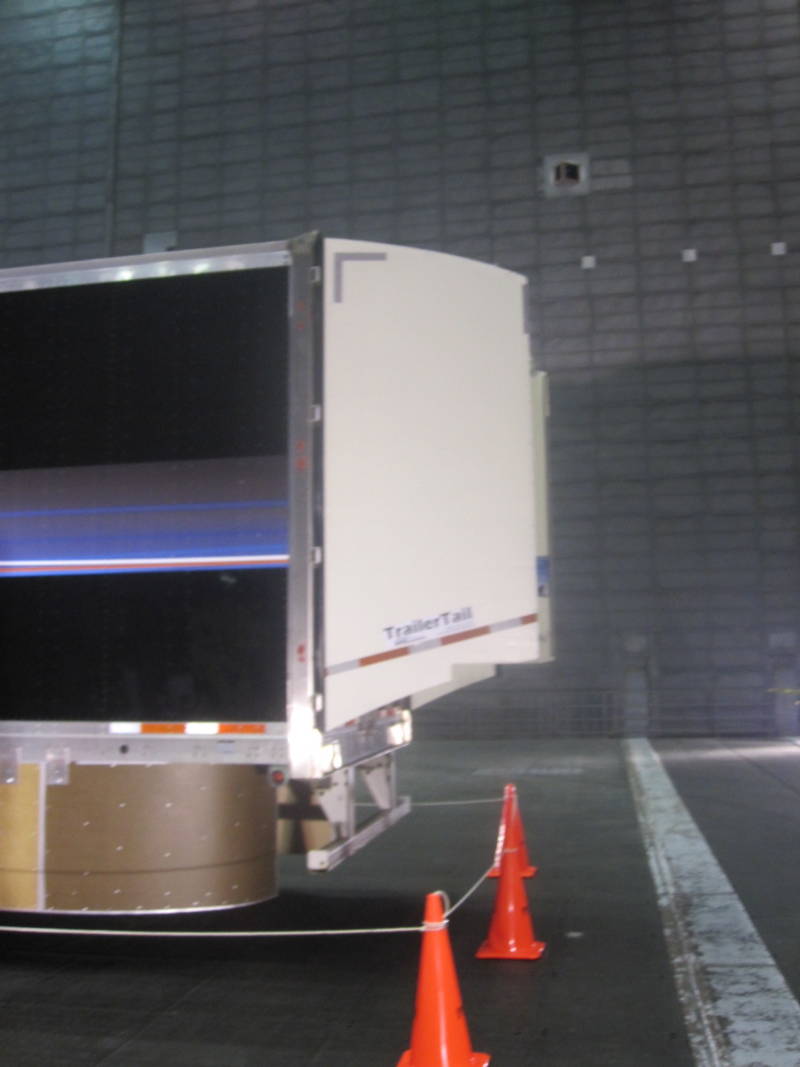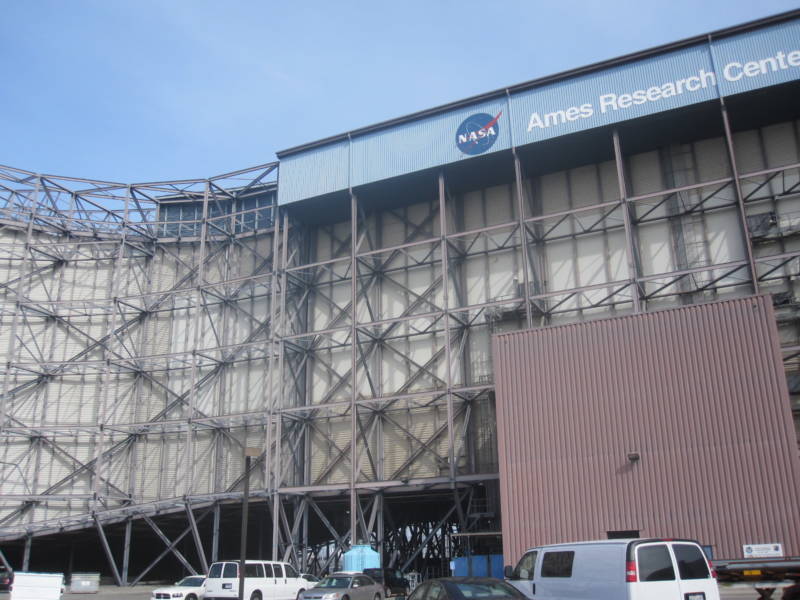
A companion radio piece to this post aired on The California Report.
The wind tunnel at NASA’s Ames Research Center in Mountain View is the largest in the world. According to Ames deputy director Lou Braxton, at various times it has housed a Boeing 747 and an America’s Cup racing yacht. But parked inside this week was a relatively diminutive semi-truck with a 53-foot trailer. The truck is called the ProStar, and according to its manufacturer, Navistar, it’s the most aerodynamic truck on the road.
The wind tunnel was open to the media because Ames, Lawrence Livermore National Lab (LLNL), Navistar, and the Air Force (which manages the tunnel) were showcasing their ongoing project designed to identify, develop, and test devices that reduce the aerodynamic drag of “big rigs.” The wind tunnel wasn’t activated for the press event but the media gathered inside the cavernous space could envision how the tests might work.
At highway speeds, more than 50 percent of the energy produced by a truck’s engine is used to overcome aerodynamic drag. Therefore, reducing that drag can produce significant fuel savings. In fact, testing thus far has determined that existing aerodynamic design adjustments and attachments can increase fuel efficiency by 12 percent, which, when applied to the US trucking fleet, could save more than three billion gallons of diesel fuel per year, a cost savings of more than $10 billion at current prices. This savings in diesel translates to a reduction of 36 million metric tons of CO2 per year.
Inside the wind tunnel, the truck’s trailer was outfitted with various attachments designed to reduce drag at critical points such as the trailer base, the under body, and the gap between the tractor and trailer. Some, such as the TrailerTail, are already commercially available, while others are still in development. For the next three weeks, scientists will test various devices and combinations. The best ones will be track tested and then road tested over the next year.
Currently, semi-trucks make up about 12 percent of US petroleum consumption; about 21 million barrels a day, according to LLNL.


